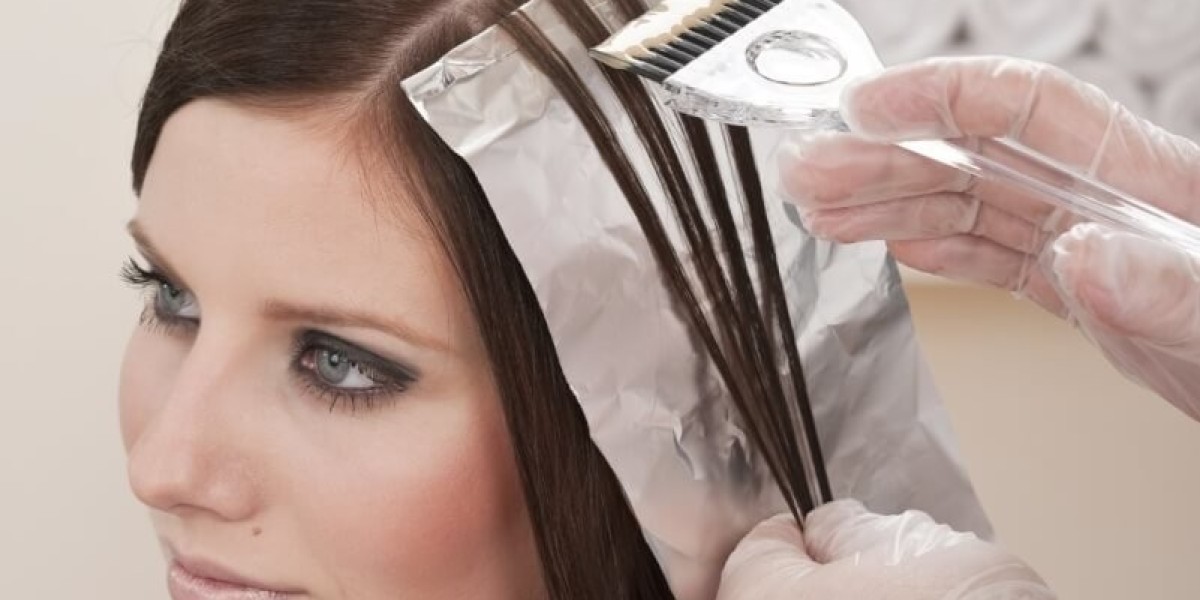Achieving a flawless full head of foils can be a game-changer for those looking to add dimension, brightness, or dramatic contrast to their hair. Whether you want subtle highlights or bold streaks, mastering the right techniques is essential for creating a seamless, natural look. This guide breaks down the key steps for achieving the perfect full head of foils, offering tips for both professionals and at-home enthusiasts.
What Are Foils?
Before diving into the techniques, it’s important to understand what foils are in hair coloring. Foiling is a method where hair is sectioned and wrapped in aluminum foils after applying color or lightener. This helps isolate the strands to prevent color from bleeding into non-treated hair while allowing the color to develop evenly.
Benefits of Full Head of Foils
- Dimension: Foils can add depth and dimension to your hair, making it look fuller and more textured.
- Customizable Results: You can control the amount of lightening, choose specific shades, and create a personalized look.
- Less Damage: Unlike all-over color treatments, foils allow you to lighten or darken sections of your hair without processing the entire head.
Preparing for a Full Head of Foils
1. Consultation and Color Selection
Before starting the foiling process, it’s crucial to have a clear idea of the desired outcome. Consider factors such as:
- Hair type and texture: Coarse hair may require more product or processing time, while fine hair needs delicate handling.
- Skin tone: Choose shades that complement your skin tone for a more natural effect.
- Maintenance: Light, bright foils often require more frequent touch-ups, while darker or more blended foils might be lower maintenance.
2. Tools You’ll Need
To achieve the perfect foils, gather the right tools:
- Tail comb: For sectioning and weaving hair.
- Foil sheets: Pre-cut foils make the process easier and faster.
- Clips: To keep sections separated while you work.
- Color or lightener: Choose the right formula based on the desired outcome.
- Gloves: Protect your hands from the color chemicals.
3. Hair Sectioning
Proper sectioning is crucial to achieving even, consistent results. Divide the hair into four sections: the back left, back right, front left, and front right. Secure each section with clips to keep them neat and manageable during the foiling process.
Foiling Techniques
1. Weaving Technique
The weaving technique is the most common method for applying foils. Here's how to do it:
- Take a small subsection of hair: Use the tail of the comb to pick up a small section of hair.
- Weave: Gently weave through the subsection by picking up every second or third strand of hair.
- Apply the color: Place a foil underneath the woven strands, and apply the color or lightener from the root to the tip.
- Fold the foil: Fold the foil neatly to cover the strands and prevent the color from bleeding.
This method creates a natural blend and subtle highlights.
2. Slice Technique
The slice technique is ideal for creating bold, high-contrast highlights.
- Take a thin section: Instead of weaving, pick up an entire thin slice of hair.
- Place the foil: Apply the foil under the section and spread the color evenly.
- Fold the foil: Ensure the foil is securely folded to prevent color leakage.
This technique works best for clients looking for stronger, more defined highlights.
3. Babylights Technique
Babylights are ultra-fine highlights that mimic the natural sun-kissed look often seen in children’s hair.
- Take very small sections: Use fine weaves to create subtle and delicate highlights.
- Apply color gently: Since the sections are thin, ensure the color is applied sparingly to prevent harsh lines.
Babylights are perfect for adding a soft, subtle glow without drastically changing the overall color of the hair.
Placement Techniques
1. Face-Framing Highlights
These highlights are placed around the front of the face to brighten and accentuate the features. This technique helps give the face a youthful and radiant look.
- Focus on the hairline: Apply foils in small sections around the face, starting from the temple and working downward.
2. Top Section Highlights
Top section highlights create a voluminous, sun-kissed look, especially when the lower layers of hair are left darker. This technique provides a natural lift and gives the illusion of fuller, more voluminous hair.
3. Full Foil Coverage
For a dramatic transformation, a full head of foils is applied throughout the entire head. This technique covers both the front and back sections of hair, providing an all-over color change with consistent highlights from root to tip.
Timing and Processing
1. Monitor the Foils
After applying the foils, it’s important to monitor them closely. Check the development of the color by opening one foil and assessing the level of lightness. If the color hasn’t reached the desired shade, re-seal the foil and continue processing.
2. Process with Heat (Optional)
For clients with resistant hair, using a low-heat dryer can speed up the processing time and help the color develop more evenly. Be cautious when applying heat to avoid damaging the hair.
Post-Foiling Care
1. Rinse Thoroughly
Once the foils have processed, it’s crucial to rinse the hair thoroughly with lukewarm water. Be gentle to prevent any color from bleeding into non-treated areas.
2. Toning
After rinsing, apply a toner to neutralize any unwanted brassy tones and enhance the overall shade. This step is especially important when working with blonde or lightened hair.
3. Deep Conditioning Treatment
Foiling can be harsh on the hair, especially when using lighteners. After rinsing and toning, apply a deep conditioning treatment to restore moisture and strengthen the hair.
Maintenance Tips
1. Use Sulfate-Free Shampoos
Sulfates can strip color from the hair, leading to fading. A sulfate-free shampoo will help maintain the vibrancy of your foils for longer.
2. Limit Heat Styling
Frequent heat styling can cause damage and dull the color. Try to air dry your hair whenever possible, or use heat protection spray if you must use hot tools.
3. Schedule Regular Touch-Ups
To keep your foils looking fresh, schedule touch-up appointments every 6-8 weeks. This ensures your color remains vibrant and any regrowth is covered.
Conclusion
Achieving a perfect full head of foils takes skill, patience, and attention to detail. By following these techniques and tips, you can create beautiful, multidimensional hair that looks natural and polished. Whether you’re a professional stylist or trying it at home, mastering the art of foiling will allow you to achieve stunning, salon-quality results every time.



